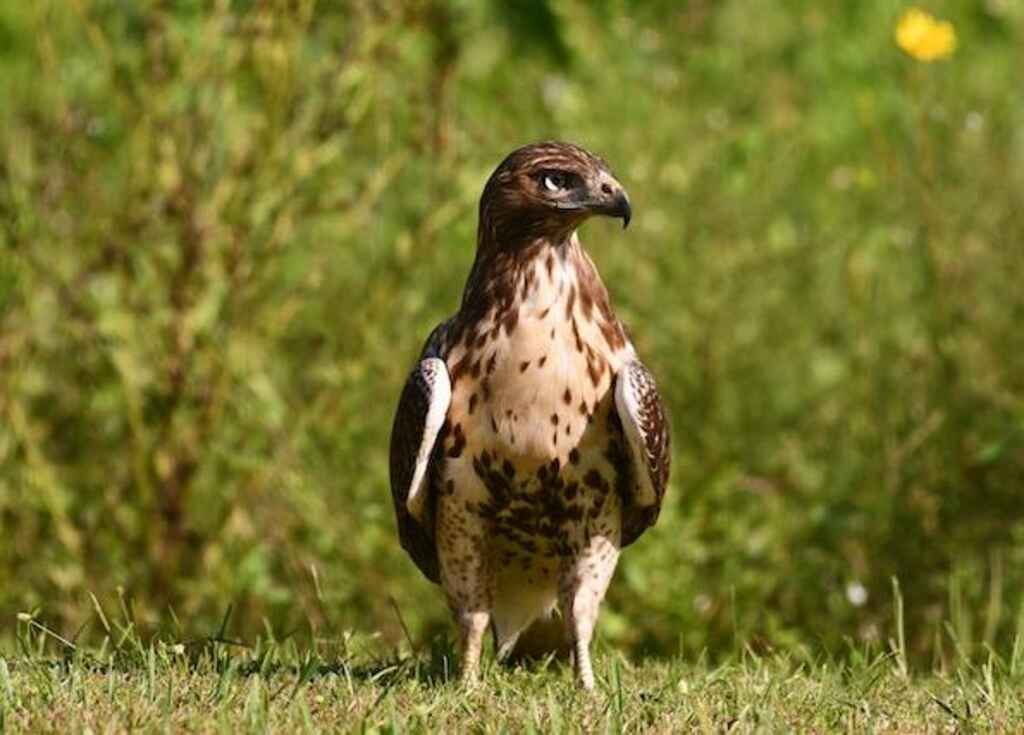Hawks are a common sight in many parts of the world, soaring high in the sky, searching for prey. They are known for their sharp talons, powerful beaks, and keen eyesight.
Chipmunks, on the other hand, are small rodents that scurry across the forest floor, collecting nuts and seeds, and storing them for the winter.
But do hawks eat chipmunks? This question has been the subject of much debate among scientists and nature enthusiasts alike.
Understanding the diet of hawks and the characteristics of chipmunks is essential in answering this question.
Hawks are carnivorous birds of prey that hunt a wide range of animals, including rodents, birds, and reptiles.
Chipmunks, on the other hand, are small, burrowing rodents that are known for their agility and speed. They are omnivores, feeding on a variety of nuts, seeds, fruits, and insects.
In this article, we will explore the relationship between hawks and chipmunks, discussing whether hawks prey on chipmunks, and the impact of this interaction on both species.
Table of Contents
- 1 Key Takeaways
- 2 The Diet of Hawks
- 3 The Characteristics of Chipmunks
- 4 Do Hawks Eat Chipmunks?
- 5 Other Small Animals That Hawks May Hunt
- 6 The Impact of Hawks on Chipmunk Populations
- 7 Hawk and Chipmunk Coexistence
- 8 The Benefits of Hawks in Ecosystems
- 9 Conservation of Hawks and Chipmunks
- 10 Frequently Asked Questions
- 11 Conclusion
- 12 Author
Key Takeaways
- Hawks are known to hunt chipmunks, along with other small rodents, using their sharp talons and beaks to catch their prey.
- Up to 50% of chipmunks in certain areas fall victim to hawk predation.
- The success rate of hawks in catching chipmunks varies depending on factors such as the location and availability of prey.
- The relationship between hawks and chipmunks is highly dependent on the habitat in which they coexist.
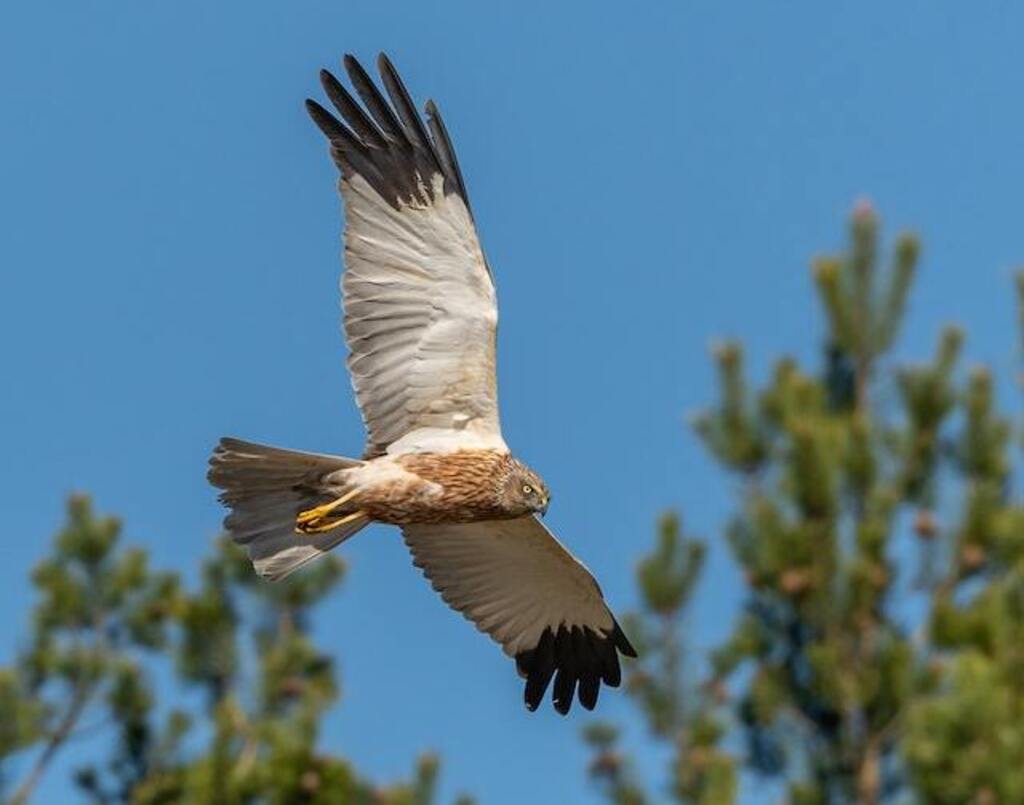
The Diet of Hawks
Hawks are known for their diverse and varied diet, which can include small mammals, birds, reptiles, and fish. These birds of prey are skilled hunters, using their sharp talons and beaks to catch their prey.
When it comes to chipmunks, hawks are known to hunt them, along with other small rodents.
Chipmunks are active during the day and are known for their quick movements, which can make them difficult for predators to catch.
However, hawks have keen eyesight and are able to spot their prey from high in the sky, making them effective hunters.
Understanding the characteristics of chipmunks can help explain why they are a potential food source for hawks.
The Characteristics of Chipmunks
Chipmunks are small, ground-dwelling rodents found throughout North America, and they are known for their impressive burrowing abilities, as they can dig tunnels up to 30 feet in length.
These small creatures are diurnal and are active during the day, with their behavior varying depending on the season.
During the warmer months, they are seen foraging for food, while during the winter, they enter a state of torpor.
Chipmunks are omnivores and feed on a variety of foods, including nuts, seeds, insects, and fruits. They are also known to store food in their burrows for later use.
Chipmunks have a wide range of habitat preferences, and they can be found in various environments, including forests, meadows, and suburban areas.
They are agile and quick, making them difficult prey for predators like hawks. Hawks are known for their hunting tactics, and they use their sharp talons and beaks to capture their prey.
While chipmunks are not the preferred prey of hawks, they can become targets in certain situations. With this in mind, it is important to explore the question, ‘do hawks eat chipmunks?’
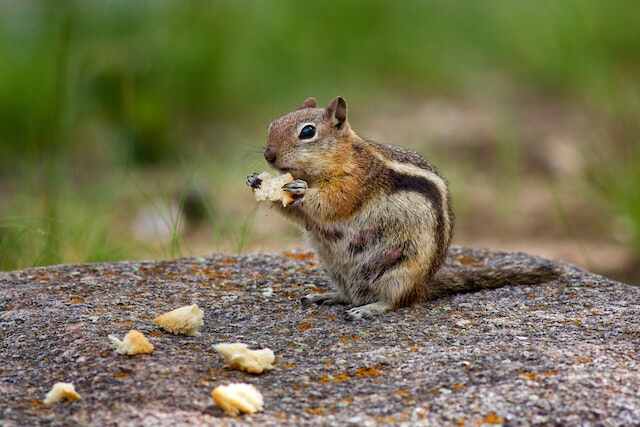
Do Hawks Eat Chipmunks?
The interaction between hawks and chipmunks is an interesting topic of discussion, particularly in relation to predation data.
As both species occupy similar habitats, it is not uncommon for them to cross paths.
Hawks are known to prey on small rodents such as chipmunks, and there is ample evidence to suggest that this is a common occurrence in the wild.
Hawk and Chipmunk Interaction
Predatory birds like hawks have been observed preying on small rodents such as chipmunks in their natural habitats. The hawk and chipmunk interaction is an example of predator-prey dynamics in the animal kingdom.
Hawks use a combination of hunting strategies to capture their prey, including aerial attacks and ambushes.
Chipmunks, on the other hand, have developed survival strategies such as burrowing and hiding to evade predators.
Despite these strategies, hawks are still able to catch chipmunks by using their keen eyesight and sharp talons.
The success rate of hawks in catching chipmunks varies depending on factors such as the location and availability of prey.
However, predation data shows that hawks are an important factor in regulating the population of chipmunks.
Predation Data
According to predation data, the population of small rodents in habitats with a high presence of hawks is regulated by predation pressure.
Predator-prey relationships are crucial to maintaining the balance of ecosystems, and the food chain dynamics can be affected by the hunting behavior of predators.
Interestingly, studies have shown that up to 50% of chipmunks in certain areas fall victim to hawk predation.
This suggests that hawks are important predators in regulating the population of small rodents, including chipmunks.
However, it is important to note that hawks may also hunt other small animals in addition to chipmunks.
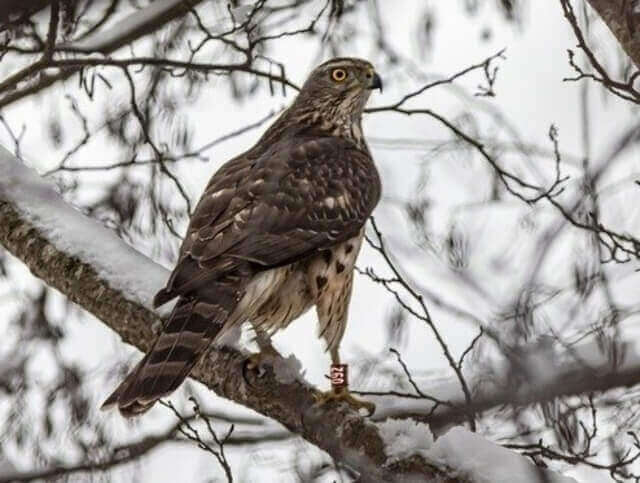
Other Small Animals That Hawks May Hunt
Small rodents, such as voles, mice, and shrews, are common prey for hawks. These small animals make up a significant portion of a hawk’s diet, and their presence in an ecosystem is essential for maintaining predator-prey dynamics and ecosystem diversity.
Hawks are skilled hunters, and they use their sharp talons and beaks to capture their prey. They are also known to hunt other small animals like lizards, snakes, and insects.
While hawks may hunt chipmunks, their impact on chipmunk populations is complex and depends on various factors such as habitat availability, predator-prey interactions, and competition with other predators.
Therefore, understanding the diet and hunting behavior of hawks is crucial to understanding their role in maintaining the delicate balance of ecosystems.
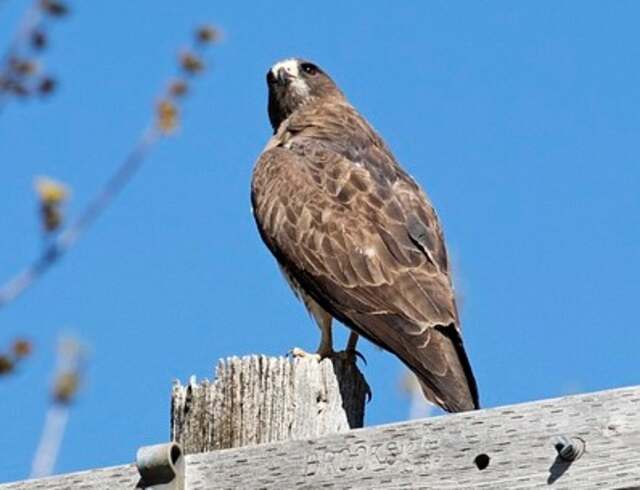
The Impact of Hawks on Chipmunk Populations
The presence of hawks in an ecosystem can have a complex and multifaceted impact on the population dynamics of chipmunks.
While hawks are known to prey on chipmunks, their impact on chipmunk populations is not as straightforward as it may seem.
In fact, the relationship between hawks and chipmunks is highly dependent on the habitat in which they coexist.
For example, in areas with dense forest cover and limited open space, hawks may have a limited impact on chipmunk populations due to the chipmunks’ ability to hide and evade predators.
On the other hand, in open areas with little cover, hawks may have a more significant impact on chipmunk populations.
Additionally, the presence of other predators and prey in the ecosystem can also play a role in the relationship between hawks and chipmunks.
To better understand this relationship, the following table provides a summary of the potential impacts of hawks on chipmunks in different habitats.
As we explore the coexistence of hawks and chipmunks in the subsequent section, it is important to keep in mind the complex role that hawks play in the population dynamics of chipmunks.
Hawk and Chipmunk Coexistence
The coexistence of hawks and chipmunks is a complex topic that requires a thorough understanding of natural predation and human intervention.
As natural predators, hawks play a vital role in controlling chipmunk populations, but human intervention can also have a significant impact on their coexistence.
Understanding the dynamics between these two species is crucial in managing their populations and ensuring their continued coexistence.
Natural Predation
Predation is a natural occurrence in which one organism hunts and kills another organism for food, and in the case of hawks, they are known to prey on chipmunks. The predator-prey dynamics between hawks and chipmunks play a significant role in ecological processes.
Hawks are skilled hunters that use their sharp talons and beaks to catch and kill chipmunks. They are able to locate prey from a distance, swoop down to capture it, and then carry it away to a safe location to eat.
Chipmunks, on the other hand, have adapted to this predation pressure by being vigilant and hiding in burrows or under rocks.
They also have a high reproductive rate to ensure their population can withstand predation.
However, human intervention, such as habitat destruction and the use of pesticides, can disrupt this delicate balance between predator and prey.
As we explore the impact of human activity on hawk and chipmunk coexistence, it is important to understand the natural predation that occurs in their ecosystem.
Human Intervention
Regrettably, human intervention through habitat destruction and pesticide use has resulted in a disruption of the delicate balance between the hawk and chipmunk populations, ultimately endangering the survival of both species.
Habitat destruction, in particular, has led to a significant decline in the population of both hawks and chipmunks.
With less vegetation cover and fewer prey animals to hunt, hawks are forced to search for alternative food sources, which can lead to increased competition among predators.
Furthermore, the use of pesticides has resulted in the poisoning of both hawks and chipmunks, as well as other wildlife species.
The negative effects of human intervention on the hawk and chipmunk populations highlight the importance of preserving natural habitats and reducing the use of harmful chemicals.
By doing so, we can help restore the delicate balance between predator and prey, and ensure the survival of these important species.
As we move forward, it is important to recognize the benefits of hawks in ecosystems, and how their presence can contribute to a healthy and thriving ecosystem.
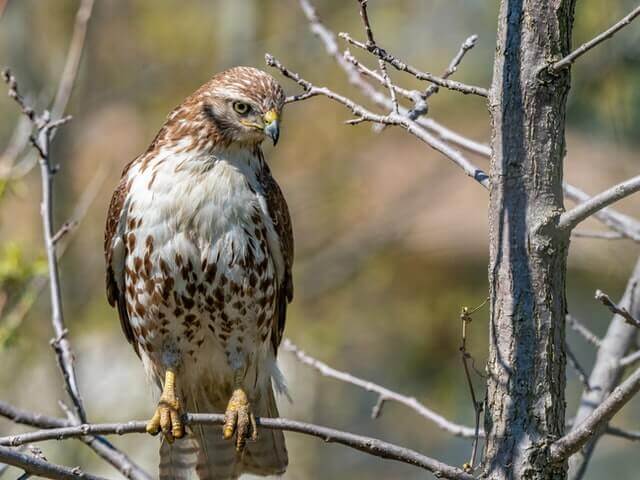
The Benefits of Hawks in Ecosystems
The presence of hawks in ecosystems provides several benefits, including natural pest control and maintaining ecological balance.
Hawks are apex predators that play a crucial role in controlling the populations of smaller animals such as rodents and insects.
This helps prevent overgrazing, defoliation, and other negative impacts that can affect the health of ecosystems.
Natural Pest Control
One effective method of controlling pests in natural environments involves utilizing the natural predators of those pests. Hawks, being natural predators, play a vital role in controlling pests in ecosystems.
Here are three ways hawks contribute to natural pest control:
1) Hawks hunt rodents like chipmunks, which are known to destroy crops and gardens. By reducing their population, hawks help maintain the balance of the ecosystem.
2) Hawks also control insect populations by feeding on insects like grasshoppers and crickets, which can cause significant damage to crops.
3) Biological control, which is the use of natural predators to control pests, is a cost-effective and environmentally friendly alternative to chemical pesticides. The benefits of falconry, which involves using hawks to hunt pests, have been recognized for centuries.
In summary, hawks play a crucial role in maintaining ecological balance and controlling pests in natural environments, making them invaluable assets to our ecosystems.
Ecological Balance
Maintaining ecological balance is a delicate dance, and any misstep can have disastrous consequences for the entire ecosystem.
The importance of biodiversity cannot be overstated, as it ensures that a variety of species can coexist and perform their respective roles in the ecosystem.
One crucial aspect of ecological balance is food chain dynamics, where different organisms consume each other to maintain balance.
For example, hawks are predators that feed on chipmunks, which are herbivores.
If the population of chipmunks were to decrease, the hawks would have less food, which could lead to a decline in their population.
Similarly, an increase in the population of chipmunks could lead to overgrazing, which would negatively impact other species that rely on the same vegetation.
Therefore, it is essential to understand the intricate relationships that exist within ecosystems to ensure that we do not disrupt the balance.
This understanding can help us develop conservation strategies that promote the coexistence of species, such as the conservation of hawks and chipmunks, which we will explore in the subsequent section.
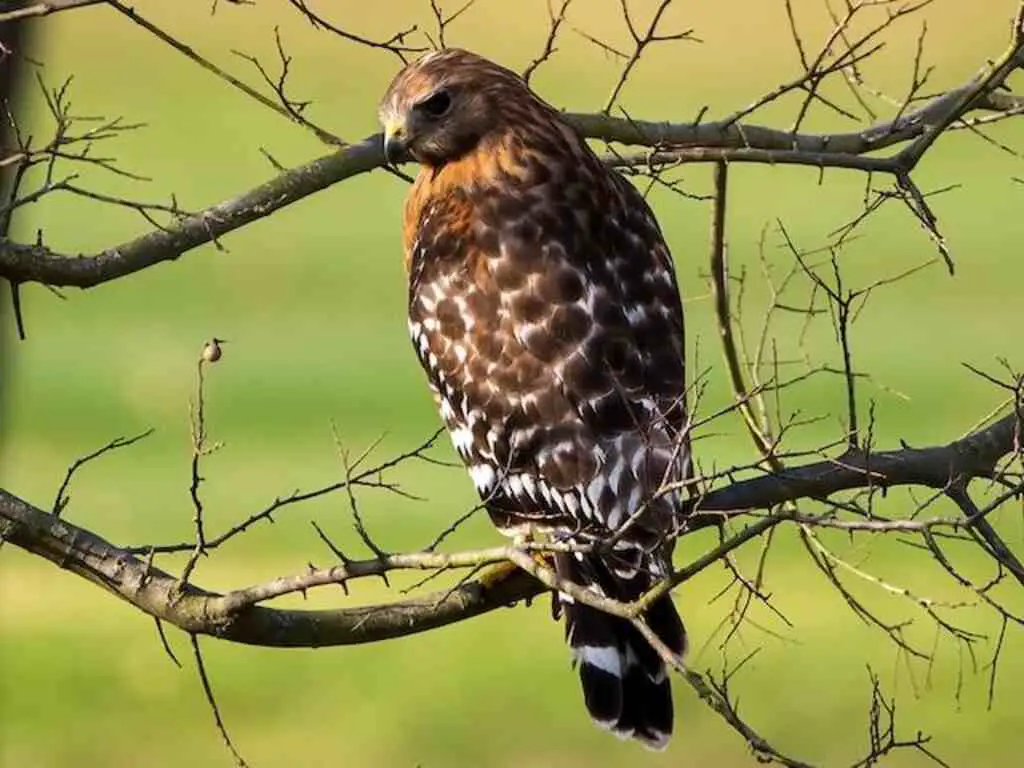
Conservation of Hawks and Chipmunks
The conservation of hawks and chipmunks is a crucial topic as both species face numerous threats in their natural habitats.
Hawks are often hunted for sport or persecuted due to their predatory nature, while chipmunks face habitat destruction and fragmentation.
Various protection efforts have been put in place to safeguard the populations of both species, including habitat restoration and conservation programs aimed at reducing hunting and persecution of hawks.
These efforts are essential for the long-term survival of both species and the overall health and balance of their ecosystems.
Threats to Both Species
Both the hawk and chipmunk face numerous threats in their respective habitats, ranging from natural predators to human interference.
Predator-prey dynamics and ecological competition are significant factors influencing the survival of both species.
Hawks are natural predators of chipmunks, but chipmunks are also competitors for resources such as food and nesting sites.
Additionally, human activities such as habitat destruction, pesticide use, and hunting can significantly impact both populations.
For example, the use of rodenticides to control chipmunk populations can also harm hawks that feed on contaminated prey.
Conversely, the removal of hawks can lead to an increase in chipmunk populations, which can have negative ecological consequences.
Therefore, it is essential to consider the complex interactions between these two species and their environment when implementing protection efforts.
Protection Efforts
Efforts to safeguard the populations of hawks and chipmunks have been undertaken, recognizing the intricate interplay between these species and their environment, as well as the impact of human activities, which can be likened to a double-edged sword.
Conservation efforts have been focused on habitat restoration, as both species require specific environments to thrive.
This includes the preservation of natural areas, such as forests and grasslands, as well as the creation of new habitats through reforestation and the establishment of green corridors.
Additionally, education and awareness programs have been implemented to promote the importance of these species and their role in the ecosystem.
Efforts to protect both hawks and chipmunks are necessary to ensure the survival of these species and maintain the delicate balance of their natural environment.
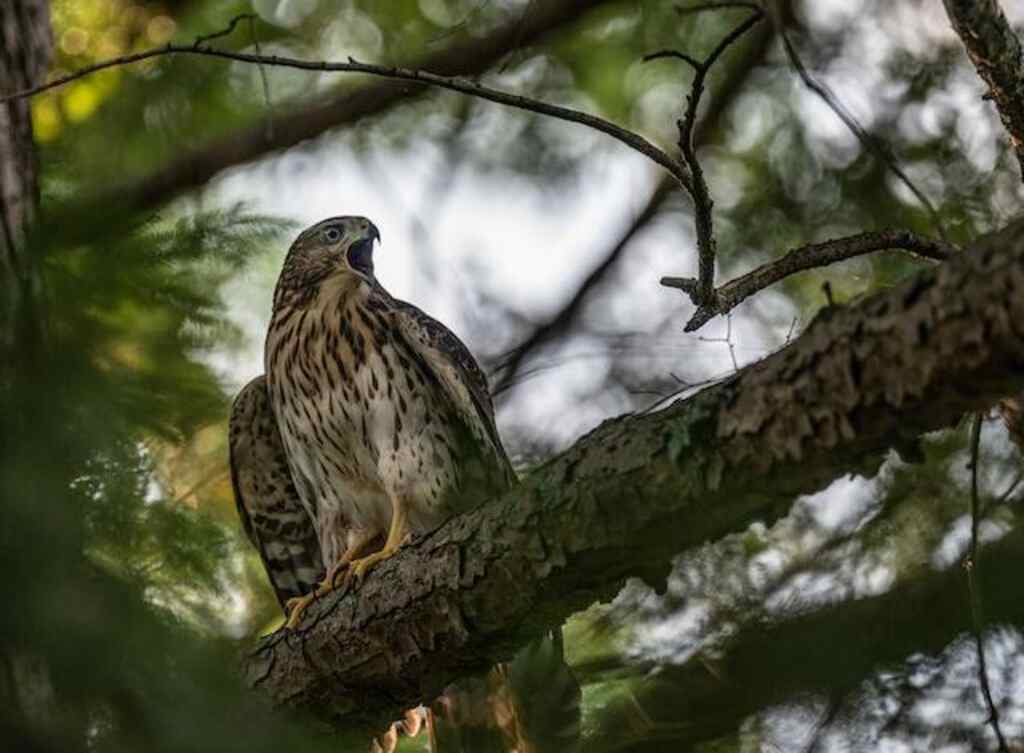
Frequently Asked Questions
How fast can a hawk fly?
Hawks are known for their impressive speed and agility while in flight. The average speed of a hawk can range from 20-40 miles per hour, but some species can reach speeds of up to 120 miles per hour. Their wing size and shape play a crucial role in their ability to achieve such speeds.
What is the lifespan of a chipmunk?
The average life span of a chipmunk is about 2-3 years, but can live up to 5-6 years in captivity. Chipmunks are omnivorous, feeding on nuts, seeds, fruits, insects, and occasionally small animals. Their behavior includes caching food and hibernating during winter.
How do hawks hunt for their prey?
Hawks are skilled predators that rely on their hunting techniques and knowledge of prey behavior to successfully capture their meals. Their ability to soar through the air and spot prey from above gives them an advantage in the wild.
What are the predators of hawks?
Hawks face predation from larger birds of prey in the hierarchy, such as eagles or owls. Additionally, coyotes may prey on hawks in certain ecosystems. Understanding these predator-prey relationships is important for managing and conserving bird of prey populations.
What is the habitat of chipmunks?
Chipmunks inhabit forest floors and create intricate burrow systems to protect themselves from predators. These small mammals prefer wooded areas with plenty of cover and access to food sources like nuts and berries.
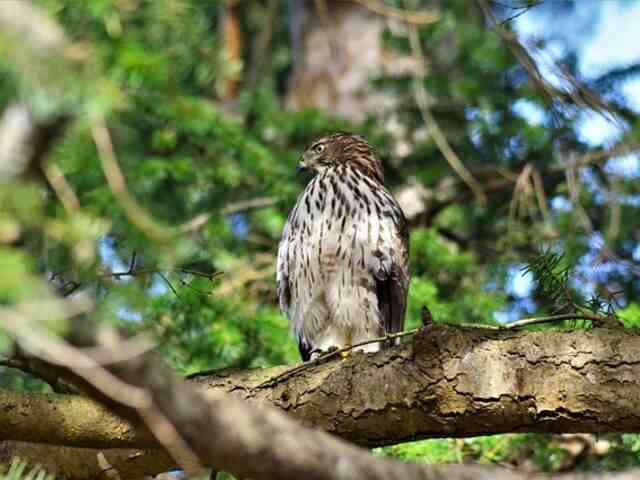
Conclusion
In conclusion, the diet of hawks consists of a variety of small animals, including chipmunks. Chipmunks are known for their small size, quick movements, and burrowing abilities.
Although they may be a challenging prey for hawks to catch, hawks have adapted their hunting techniques to successfully capture chipmunks.
Hawks play an important role in maintaining healthy ecosystems by controlling the populations of small animals.
However, the impact of hawks on chipmunk populations may have consequences for the ecosystem.
It is crucial to balance the conservation of hawks and chipmunks to ensure the health and stability of the ecosystem.
All in all, the coexistence of hawks and chipmunks highlights the intricate relationships among species in ecosystems, and the importance of understanding these relationships for conservation efforts.

